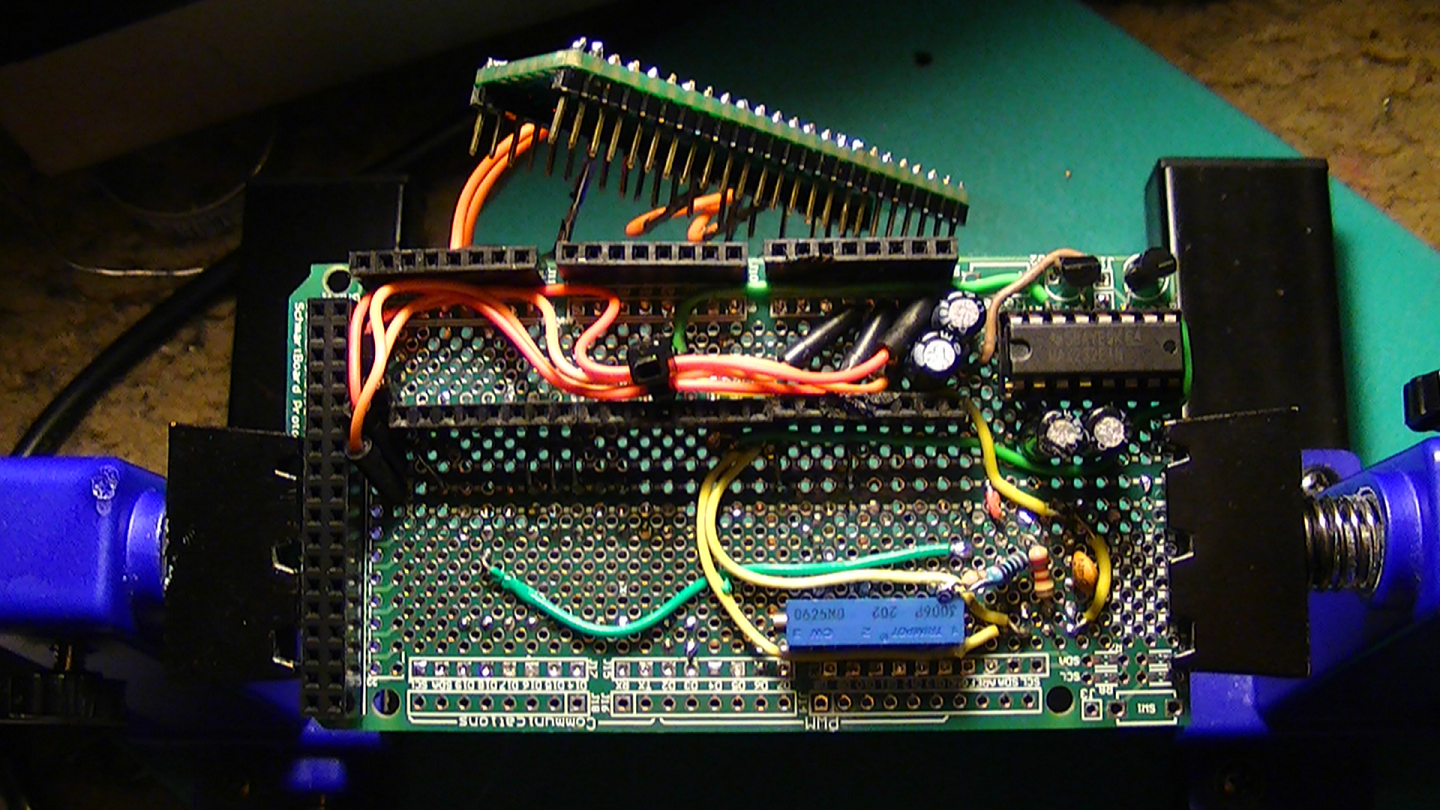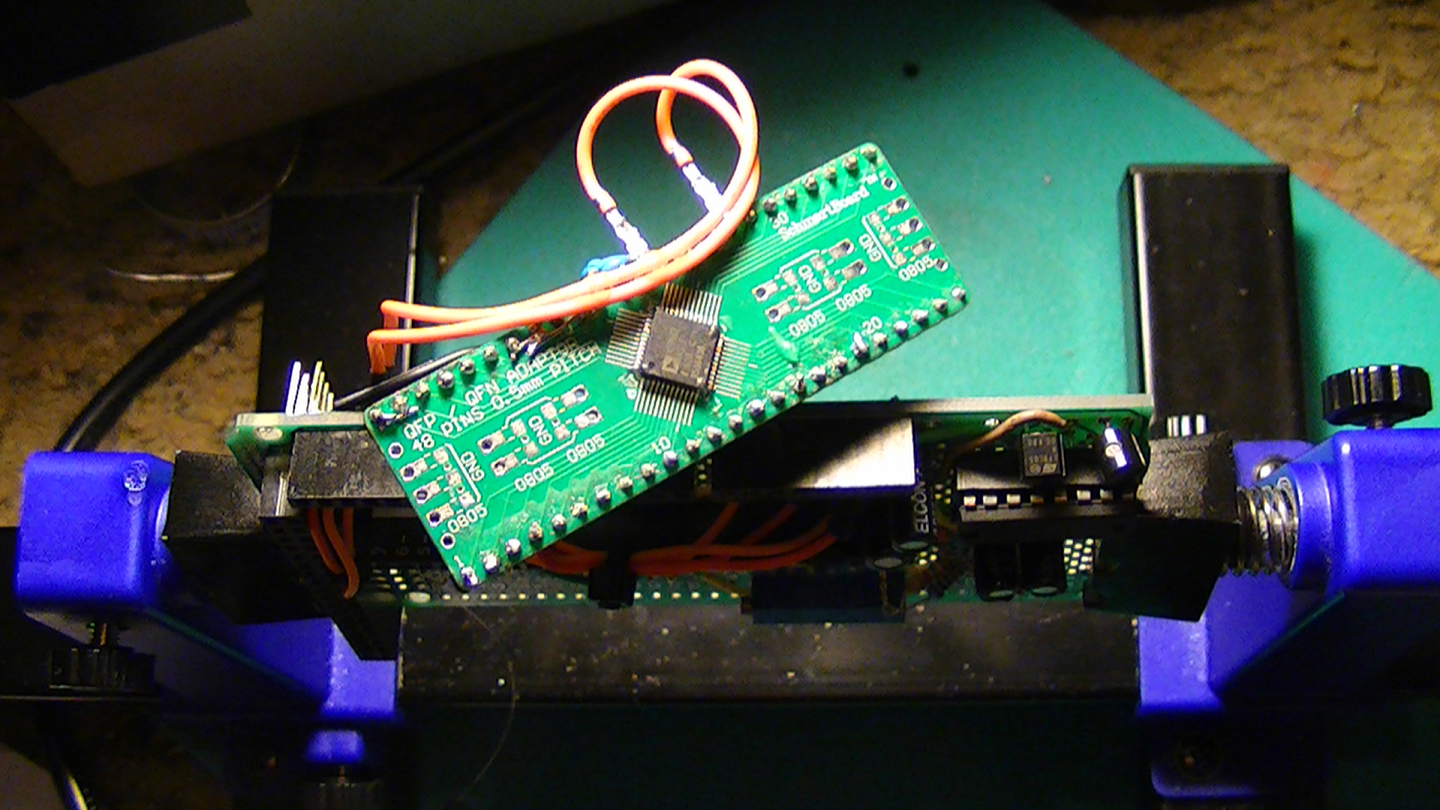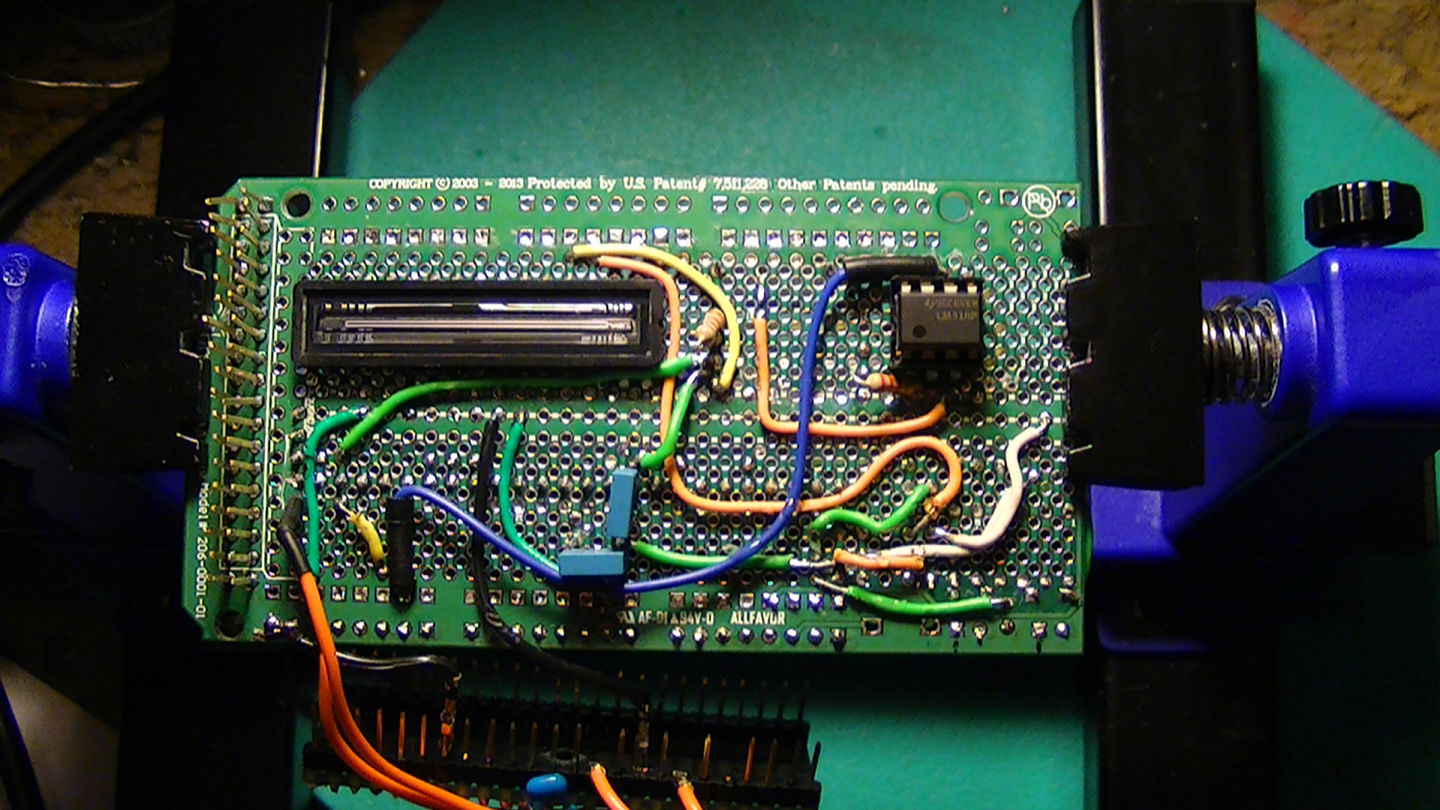*UPDATE* 3/23/2017 4:59:AM
Ok, I tried to outsmart the AD7667, the LM318p is NOT going to work for the simple reason that the slew rate is too small (50 V/um) even with REV C, the slew rate is still only 70 V/um. The AD8021 has a slew rate of 120 V/um, upon testing the CCD output using the serial plotter, the signal was very "jumpy." (also the LM318's bandwidth is too small, 15MHz.)
Also the MAX232 was getting very hot and I can't afford the ADC getting damaged, so back to placing the AD8021 in it's rightful place. I will have to re-design component placements and get everything to fit on a 99 X 53.2 mm board.
I had to make a major modification to the CCD detector module this week, the leads were too long coming from the ADC to the MCU, so I had to completely de-solder the boards and reconfigure them on one board.
A double sided type configuration, very tedious, but worth it. I got everything on both sides and replaced the AD8021 op amp with the LM318P REV B op amp, reason for this is the ad8021 is so very small and hard to work with, so I sacrificed some speed and bandwidth on the video side of things and the LM318 will provide the same function and low noise, with greater stability for the MAX232.
I sacrificed a little bandwidth at the pre-amp side for the ADC, by placing a 10pf cap at pin 5 of the op amp (the data sheet calls for a 7pf, but I need a little more stability,) so I cut the bandwidth down a bit but increase over all stability of the video output, and the MAX232 can handle the load, and I can still operate at 5vdc.
This is the back end view showing the ADC and MAX232.

A close up shot of the AD7667 (ADC)

Below is the TCD1304AP CCD chip module and LM318P op amp

 David H Haffner Sr
David H Haffner Sr
Discussions
Become a Hackaday.io Member
Create an account to leave a comment. Already have an account? Log In.